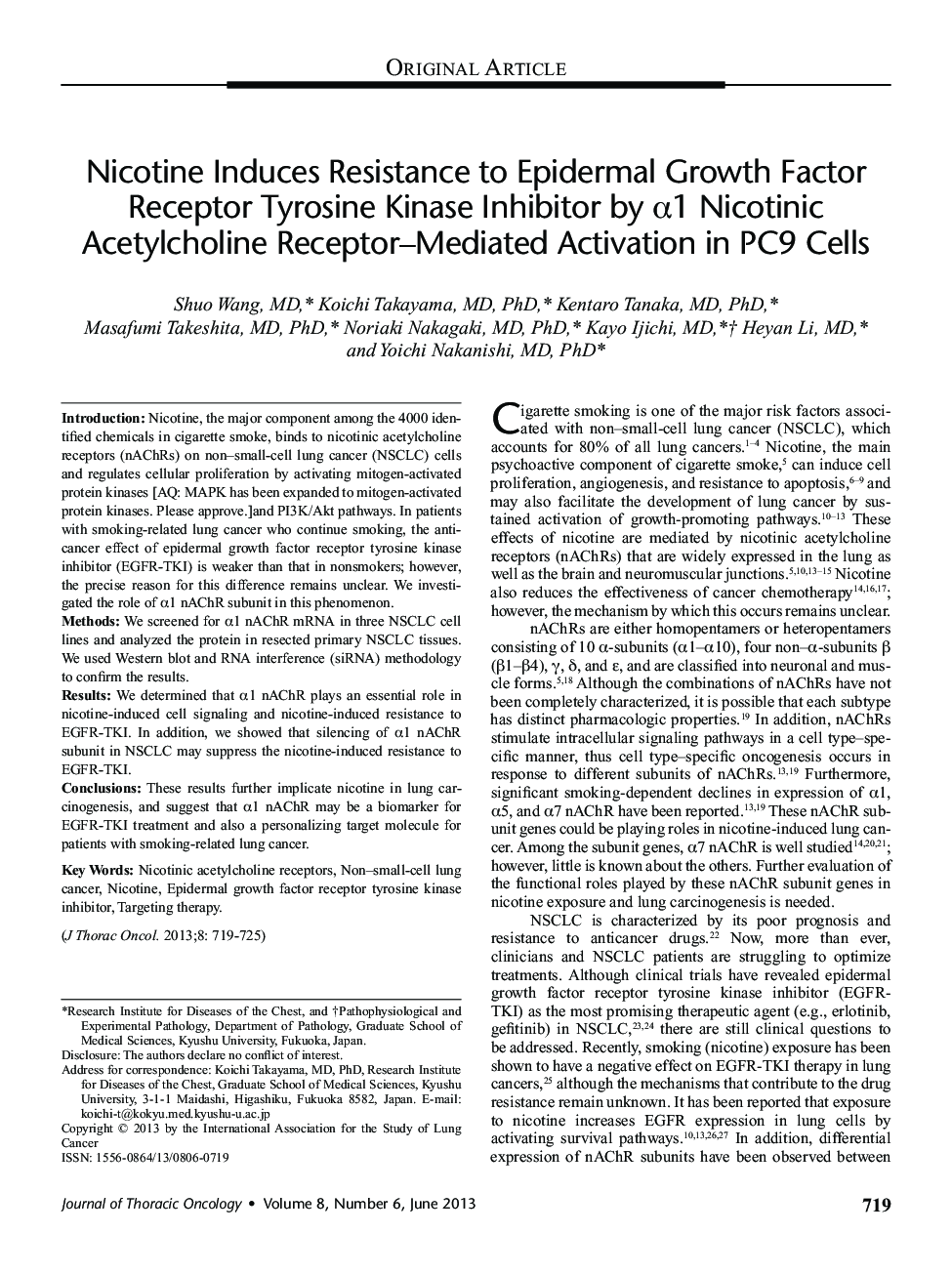| Article ID | Journal | Published Year | Pages | File Type |
|---|---|---|---|---|
| 3989830 | Journal of Thoracic Oncology | 2013 | 7 Pages |
IntroductionNicotine, the major component among the 4000 identified chemicals in cigarette smoke, binds to nicotinic acetylcholine receptors (nAChRs) on non–small-cell lung cancer (NSCLC) cells and regulates cellular proliferation by activating mitogen-activated protein kinases [AQ: MAPK has been expanded to mitogen-activated protein kinases. Please approve.]and PI3K/Akt pathways. In patients with smoking-related lung cancer who continue smoking, the anticancer effect of epidermal growth factor receptor tyrosine kinase inhibitor (EGFR-TKI) is weaker than that in nonsmokers; however, the precise reason for this difference remains unclear. We investigated the role of α1 nAChR subunit in this phenomenon.MethodsWe screened for α1 nAChR mRNA in three NSCLC cell lines and analyzed the protein in resected primary NSCLC tissues. We used Western blot and RNA interference (siRNA) methodology to confirm the results.ResultsWe determined that α1 nAChR plays an essential role in nicotine-induced cell signaling and nicotine-induced resistance to EGFR-TKI. In addition, we showed that silencing of α1 nAChR subunit in NSCLC may suppress the nicotine-induced resistance to EGFR-TKI.ConclusionsThese results further implicate nicotine in lung carcinogenesis, and suggest that α1 nAChR may be a biomarker for EGFR-TKI treatment and also a personalizing target molecule for patients with smoking-related lung cancer.
